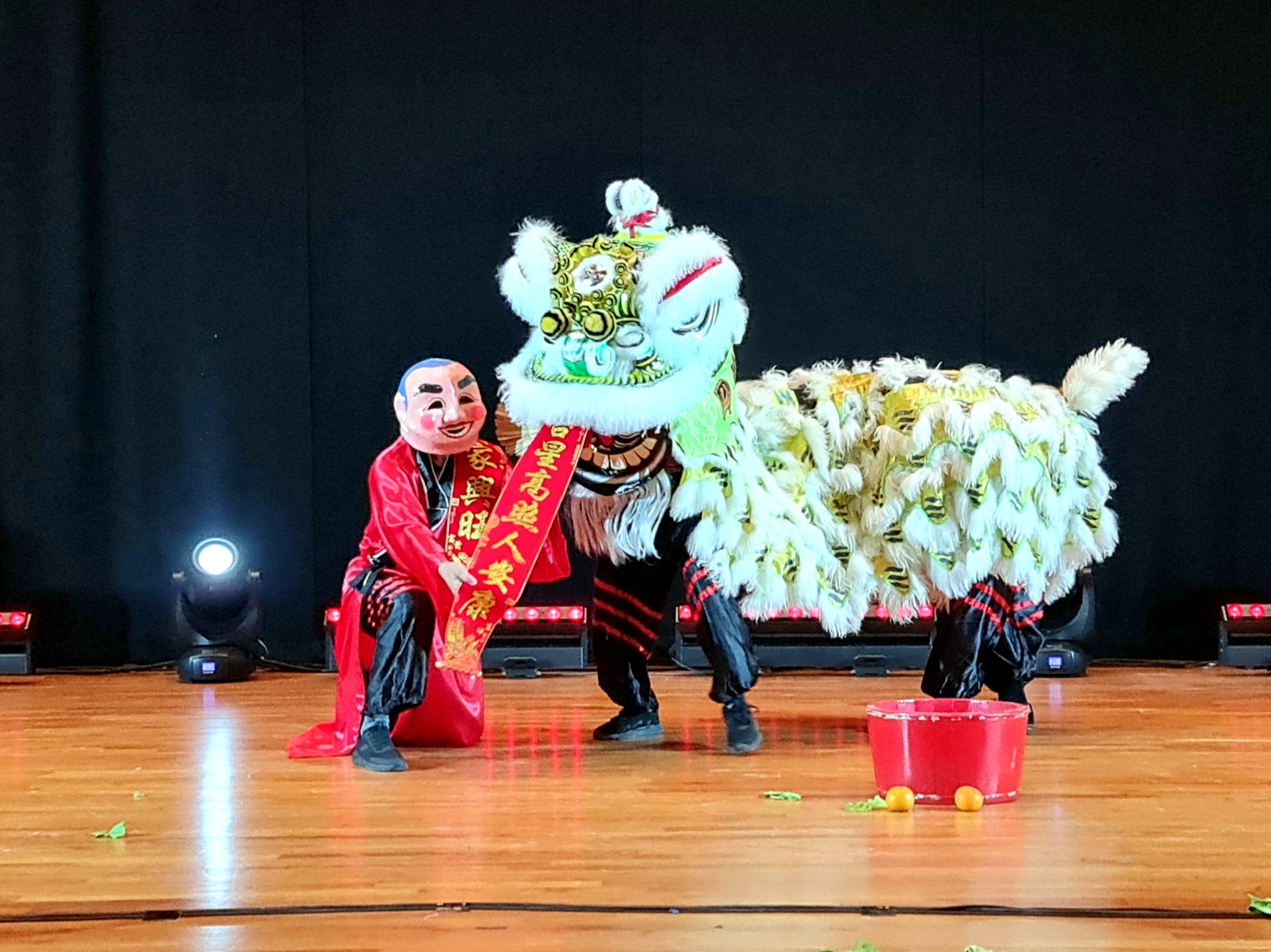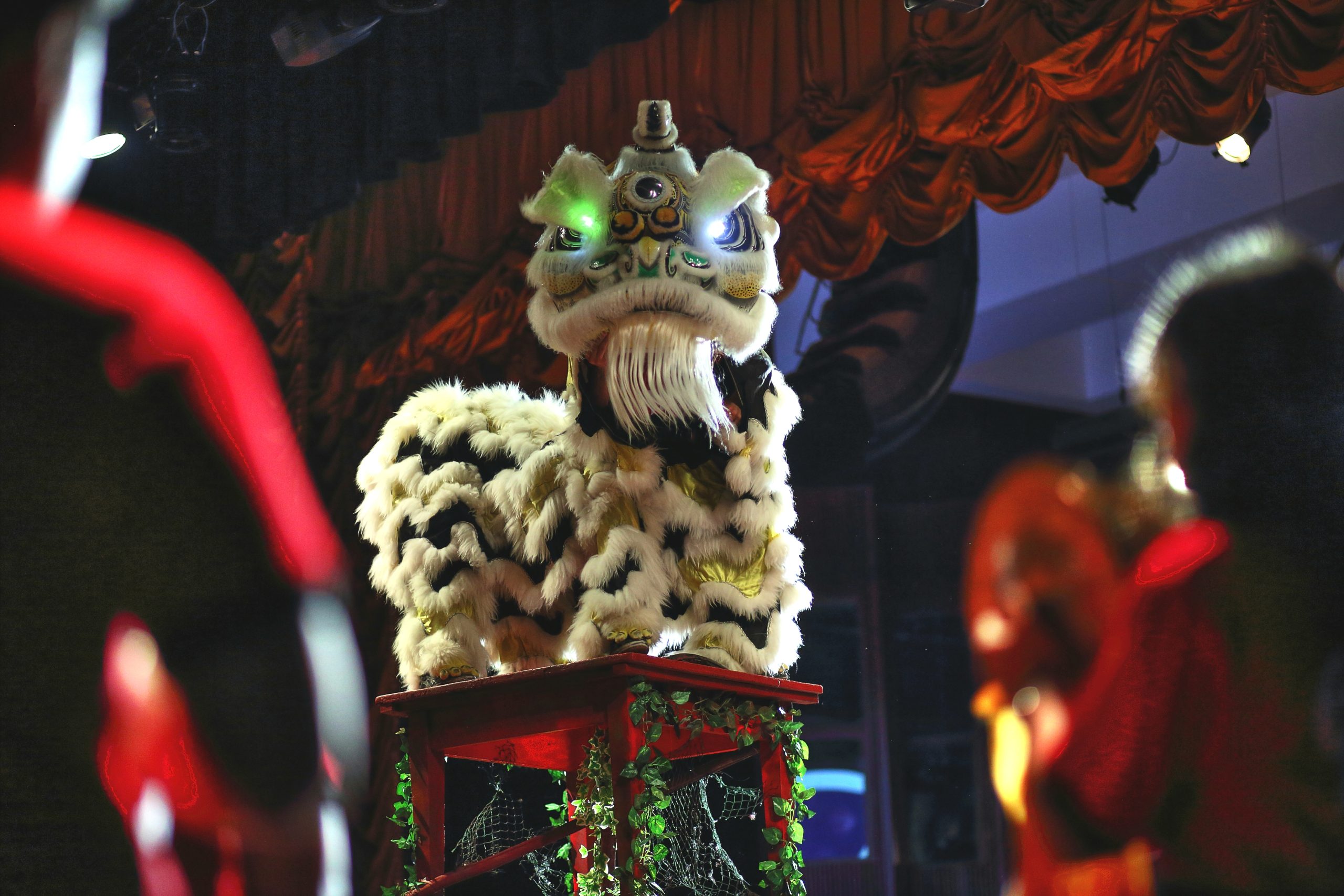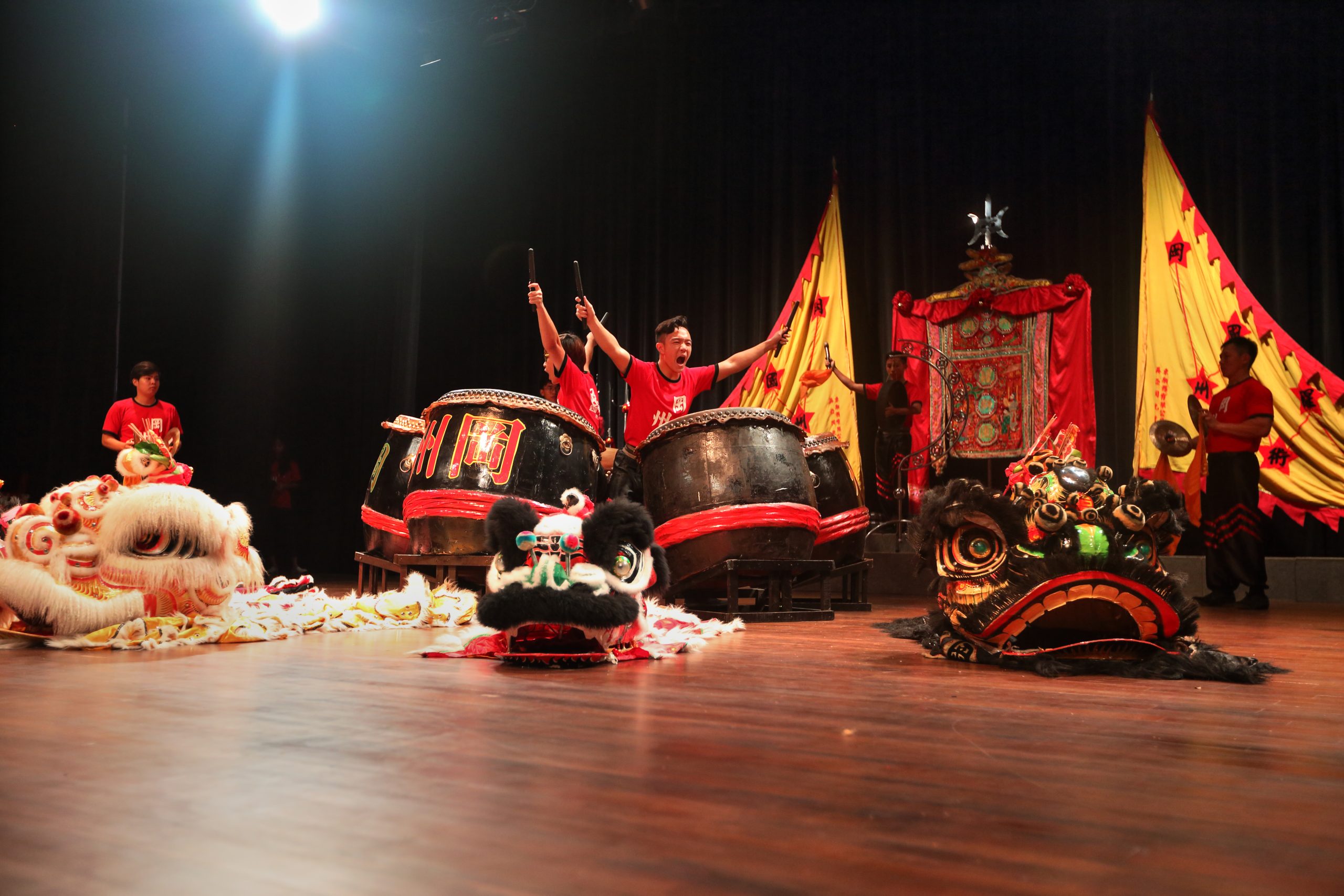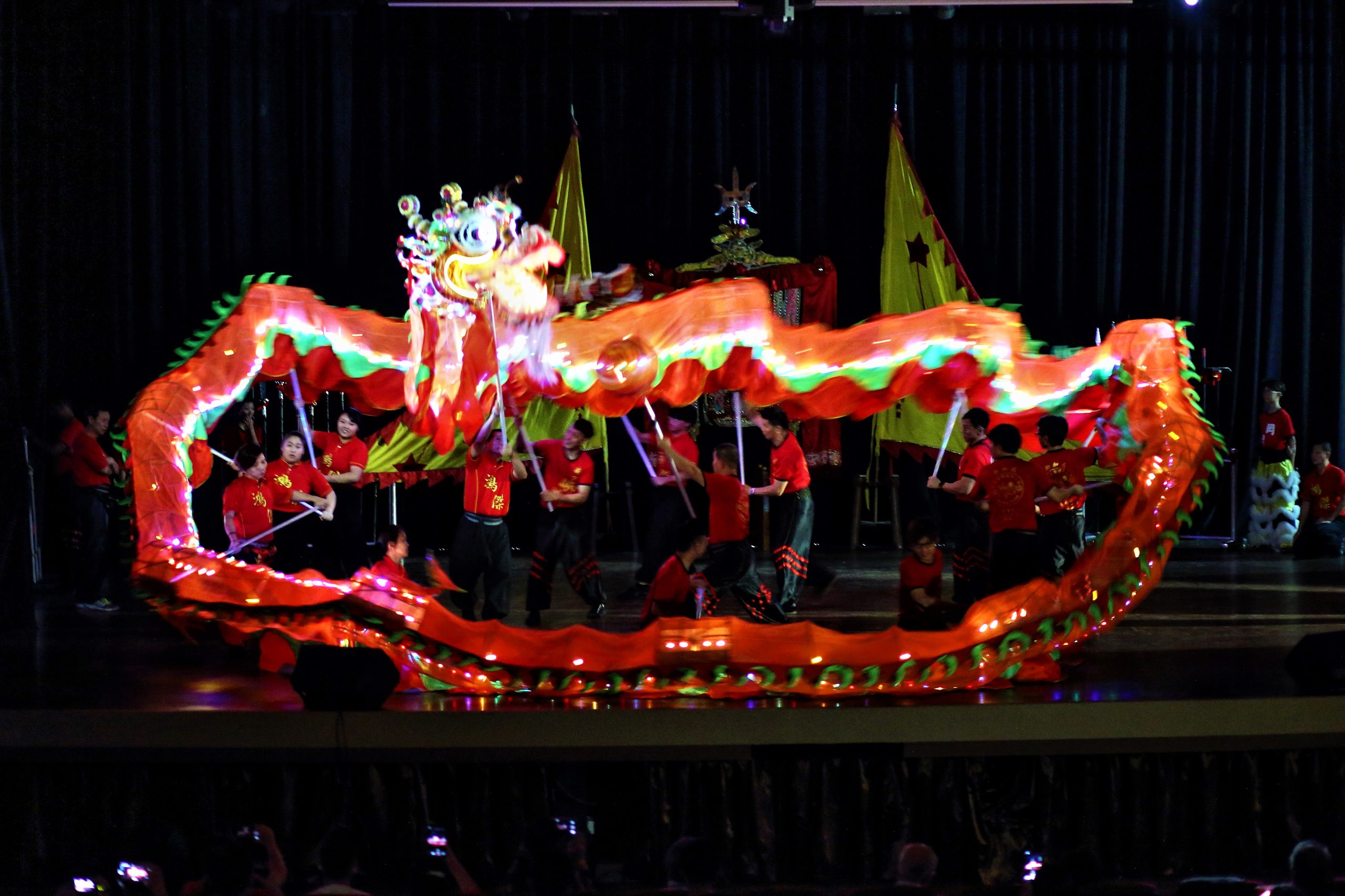“Agile movements are achieved through hardship and perseverance, stable horse stances rely on real Kungfu.”
The Cantonese Foshan Lion (粤狮) is the representative of all Southern Lions. Cantonese lion dancing attaches importance to horse stances and various martial arts techniques as its foundations. To perform a traditional lion dance for more than thirty-minutes is a true test of a practitioner’s kungfu. The most outstanding Hung Gar Lion Dance Master in history is none other than “Foshan Lion King” Grandmaster Wong Fei Hong.
Traditional lion dance almost always has the “plucking the green” component (采青). The origin of plucking the green can be traced back to the civilian anti-Qing movement. In order to disguise their anti-Qing cause, they use the phonetic similarity between “plucking the green” (“采青”) and “trampling the Qing” (“踩清”) to belittle the Qing government. Likewise, the lion dance routine of “swallowing the green” (“吞青”) signifies “overthrowing the Qing Dynasty” (“吞灭清朝”), and the routine of “throwing out the green” (“吐青”) is a metaphor for “dispersing the Qing government” (“散清”). As this art is passed down over the generations, other elements, such as “stories” and “good fortune”, were included in the plucking green themes, leading to the rich traditional green formation culture we see today. To successfully overcome green formations is a test of the wisdom and skills of the lion dancers.
It is said that Xinhui’s dragon dance has a history of a thousand years. It evolved from straw dragon to fire dragon, fabric dragon and gauze dragon. The gauze dragon of Xinhui’s Chao Lian and He Tang also has a history of more than 800 years. Its unique feature is to place candles in the dragon’s body to create a spectacular sight of a blinking gauze dragon in movement at night.
Kong Chow Wui Koon’s Dragon Dance Troupe was formed in 1980 and has since performed various types of dragons created in-house, including huge silver dragon, golden dragon, gauze dragon and fire dragon, at major events (e.g., Chingay street parade and River Hongbao).








